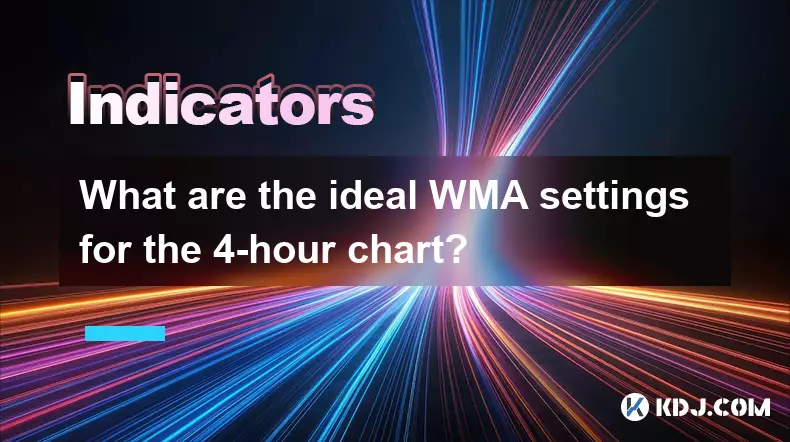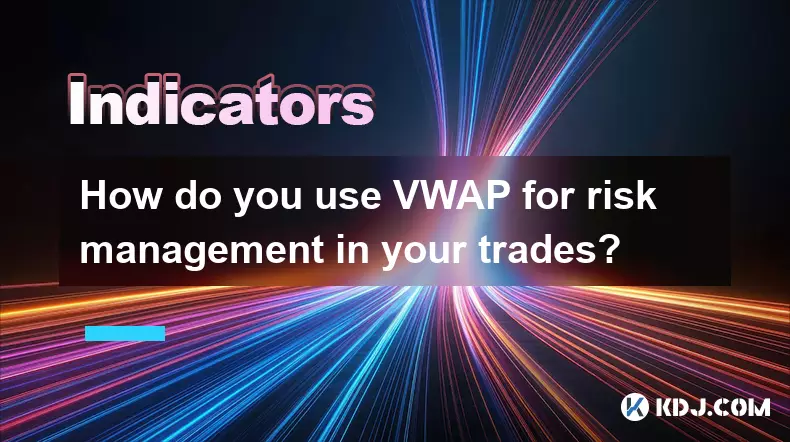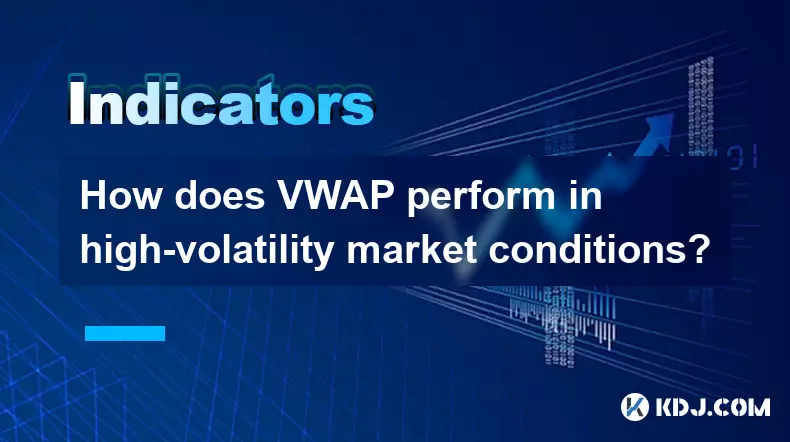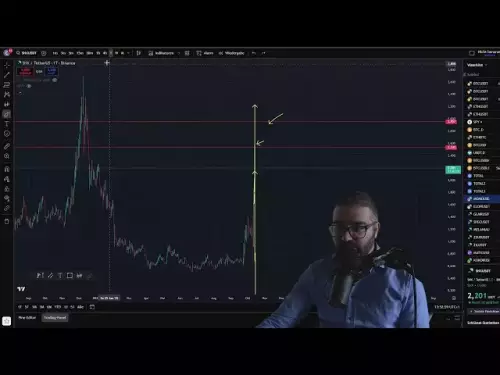-
 bitcoin
bitcoin $115692.075601 USD
5.13% -
 ethereum
ethereum $4162.931611 USD
11.68% -
 bnb
bnb $1310.063287 USD
17.56% -
 tether
tether $1.000983 USD
0.00% -
 xrp
xrp $2.534505 USD
8.16% -
 solana
solana $198.235737 USD
13.49% -
 usd-coin
usd-coin $1.000236 USD
0.02% -
 dogecoin
dogecoin $0.207352 USD
12.89% -
 tron
tron $0.323043 USD
3.62% -
 cardano
cardano $0.701559 USD
11.88% -
 hyperliquid
hyperliquid $39.924597 USD
8.30% -
 chainlink
chainlink $18.934457 USD
11.56% -
 ethena-usde
ethena-usde $1.000552 USD
0.02% -
 stellar
stellar $0.340575 USD
7.05% -
 bitcoin-cash
bitcoin-cash $545.011757 USD
8.86%
What are the ideal WMA settings for the 4-hour chart?
The 9, 21, and 50-period WMAs are key for 4-hour crypto trading, offering dynamic support/resistance and trend signals when combined with volume and price action.
Oct 13, 2025 at 09:19 pm

Optimal WMA Settings for the 4-Hour Chart
When analyzing cryptocurrency price movements on the 4-hour chart, traders often rely on weighted moving averages (WMA) to identify trends and potential reversal points. The WMA assigns more weight to recent prices, making it more responsive than a simple moving average (SMA). This sensitivity is particularly useful in volatile markets like crypto, where timing can significantly impact profitability.
Commonly Used WMA Periods
- 9-period WMA: This setting is favored by short-term traders who aim to capture quick momentum shifts. On the 4-hour chart, a 9-period WMA reacts swiftly to price changes, offering early signals for entries and exits. It works well when combined with oscillators like RSI or Stochastic to confirm overbought or oversold conditions.
- 21-period WMA: Considered a balanced choice, this period aligns closely with approximately five trading days, reflecting a weekly cycle. It smooths out noise while still being sensitive enough to detect emerging trends. Many day and swing traders use this as a dynamic support or resistance level.
- 50-period WMA: This longer-term WMA helps filter out minor fluctuations and highlights the broader trend direction. When price remains above the 50-period WMA on the 4-hour chart, the bias is generally bullish; below indicates bearish sentiment. Institutional traders often monitor this level for strategic positioning.
- Some advanced strategies involve combining multiple WMAs—for example, using crossovers between the 9 and 21-period lines as trade triggers. These multi-layered approaches help reduce false signals and improve accuracy in ranging or choppy markets.
- The ideal setting ultimately depends on the trader’s style, risk tolerance, and the specific cryptocurrency being traded. Altcoins with higher volatility may benefit from slightly longer periods to avoid whipsaws, whereas major pairs like BTC/USDT might perform better with tighter settings.
Adjusting WMA Based on Market Conditions
- In strong trending markets, shorter WMAs like the 9 or 21 can keep traders aligned with momentum without premature exits. During such phases, pullbacks to the WMA often present high-probability entry zones.
- During consolidation or sideways movement, longer periods such as the 50 or even 100-period WMA can act as anchors. Price bouncing between these levels may indicate range-bound behavior, prompting traders to adopt mean-reversion tactics instead of trend-following.
- Volatility spikes—common during macroeconomic announcements or exchange-related news—can distort shorter WMAs. In these cases, overlaying a second, slower WMA provides context and prevents impulsive decisions based on temporary distortions.
- Backtesting different WMA combinations across various crypto assets reveals that no single setting works universally. Ethereum, for instance, often exhibits stronger mean-reverting tendencies compared to Bitcoin, which tends to trend more persistently.
Integrating WMA with Other Tools
- Volume-weighted analysis enhances WMA effectiveness. A breakout above the 21-period WMA accompanied by rising volume increases the likelihood of sustained upward movement.
- Using WMA in conjunction with Fibonacci retracement levels allows traders to pinpoint confluence zones. For example, a 61.8% retracement coinciding with the 50-period WMA could signal a high-conviction reversal point.
- Chart patterns such as flags, triangles, or double bottoms gain added credibility when confirmed by WMA alignment. A breakout from a consolidation pattern above a rising WMA reinforces bullish continuation potential.
- On-chain metrics like exchange inflows or funding rates can complement technical signals derived from WMA crossovers, providing a more holistic view of market structure and sentiment.
Frequently Asked Questions
How does WMA differ from EMA in crypto trading?The WMA places linearly decreasing weights on past data, giving the most recent price the highest importance. While similar to the exponential moving average (EMA), the calculation method differs slightly, making WMA more aggressive in reacting to price changes. In fast-moving crypto markets, this responsiveness can offer earlier signals, though it may also increase false positives during choppy conditions.
Can WMA be used effectively in ranging markets?Yes, but with caution. In sideways markets, the WMA will frequently cross the price back and forth, generating misleading signals. Traders should combine it with range identification tools like Bollinger Bands or horizontal support/resistance levels to avoid unnecessary trades.
Is there a best WMA setting for altcoins?Altcoins vary widely in behavior. Lower-cap tokens often exhibit erratic moves, so using a 21 or 50-period WMA helps reduce noise. High-beta altcoins may respond better to a 9-period WMA during strong momentum runs, especially when paired with volume confirmation.
Should I rely solely on WMA for trade decisions?No single indicator should be used in isolation. The WMA is a powerful tool for identifying trend direction and momentum, but integrating it with price action, volume, and broader market context improves decision-making accuracy and reduces risk exposure.
Disclaimer:info@kdj.com
The information provided is not trading advice. kdj.com does not assume any responsibility for any investments made based on the information provided in this article. Cryptocurrencies are highly volatile and it is highly recommended that you invest with caution after thorough research!
If you believe that the content used on this website infringes your copyright, please contact us immediately (info@kdj.com) and we will delete it promptly.
- XRP Price Prediction: Weekend Rollercoaster or Rally?
- 2025-10-12 08:45:16
- Bittensor (TAO): Super Bullish Signals Point to Potential 2x Rally
- 2025-10-11 10:25:12
- Silver Price Correction: Navigating the Dip & Identifying Key SEO Keywords
- 2025-10-11 10:25:12
- Decoding Crypto Trends: Bittensor's Bull Run, Cardano's Dip, and LivLive's Presale Buzz in 'Uptober 2025'
- 2025-10-12 08:45:16
- MoonBull: The Crypto Meme Coin Promising 1000x Gains?
- 2025-10-11 10:30:01
- Crypto Payroll Revolution: Stablecoins, Altcoins, and the Future of Salary Payments
- 2025-10-11 10:30:01
Related knowledge

What's the main difference between VWAP and TWAP?
Oct 12,2025 at 11:54am
Understanding VWAP and Its Role in Crypto Trading1. Volume Weighted Average Price (VWAP) is a trading benchmark that calculates the average price of a...

How do you identify exhaustion moves using VWAP and its bands?
Oct 12,2025 at 08:00am
Understanding the Role of Decentralized Exchanges in Crypto Trading1. Decentralized exchanges (DEXs) operate without a central authority, allowing use...

What are the main advantages of using VWAP over EMA?
Oct 11,2025 at 02:18am
Main Advantages of Using VWAP Over EMA1. Volume-Weighted Average Price (VWAP) incorporates trading volume into its calculation, offering a more accura...

How do you use VWAP on different chart types like Heikin Ashi?
Oct 11,2025 at 05:01pm
Understanding VWAP in the Context of Heikin Ashi Charts1. The Volume Weighted Average Price (VWAP) is a powerful analytical tool commonly used by trad...

How do you use VWAP for risk management in your trades?
Oct 11,2025 at 02:54am
Understanding VWAP as a Dynamic Benchmark1. The Volume Weighted Average Price (VWAP) serves as a crucial reference point in intraday trading by reflec...

How does VWAP perform in high-volatility market conditions?
Oct 10,2025 at 08:00pm
Understanding VWAP in Turbulent Market Phases1. Volume-Weighted Average Price (VWAP) serves as a benchmark for institutional traders aiming to assess ...

What's the main difference between VWAP and TWAP?
Oct 12,2025 at 11:54am
Understanding VWAP and Its Role in Crypto Trading1. Volume Weighted Average Price (VWAP) is a trading benchmark that calculates the average price of a...

How do you identify exhaustion moves using VWAP and its bands?
Oct 12,2025 at 08:00am
Understanding the Role of Decentralized Exchanges in Crypto Trading1. Decentralized exchanges (DEXs) operate without a central authority, allowing use...

What are the main advantages of using VWAP over EMA?
Oct 11,2025 at 02:18am
Main Advantages of Using VWAP Over EMA1. Volume-Weighted Average Price (VWAP) incorporates trading volume into its calculation, offering a more accura...

How do you use VWAP on different chart types like Heikin Ashi?
Oct 11,2025 at 05:01pm
Understanding VWAP in the Context of Heikin Ashi Charts1. The Volume Weighted Average Price (VWAP) is a powerful analytical tool commonly used by trad...

How do you use VWAP for risk management in your trades?
Oct 11,2025 at 02:54am
Understanding VWAP as a Dynamic Benchmark1. The Volume Weighted Average Price (VWAP) serves as a crucial reference point in intraday trading by reflec...

How does VWAP perform in high-volatility market conditions?
Oct 10,2025 at 08:00pm
Understanding VWAP in Turbulent Market Phases1. Volume-Weighted Average Price (VWAP) serves as a benchmark for institutional traders aiming to assess ...
See all articles










































































